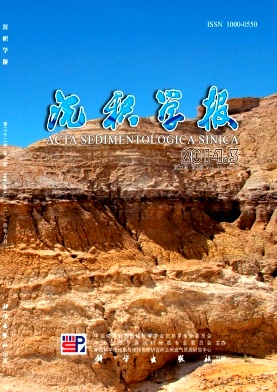New Approach on the Study of Dolomite Origin: The crystal structure analysis of dolomite
- Received Date: 2013-12-09
- Rev Recd Date: 2014-03-17
- Publish Date: 2014-06-10
-
Key words:
- dolomite origin /
- crystal structure /
- ordering degree /
- crystal cell parameter /
- crystal lattice stripes /
- interplanar distance /
- lattice defect /
- forming setting
Abstract: There is multiplicity during the study of dolomite origin with conventional methods. It is over simple and patternized using the existing dolomite models or establishing new models. The crystal structures of dolomite preserved the forming environments, crystallizing velocity, crystal growing and diversification characteristics of dolomite crystals and the fluid characteristics, and so on. The crystal structure analysis of dolomite is an effective method to explore the origin of dolomite, which was concerned by few researchers. Based on petrographic and geochemical studies, this paper used X-ray diffraction, TEM and EPM methods and focused on the different characteristics of ordering degrees, crystal cell parameters, crystal lattice stripes, interplanar distances, and lattice defects of 5 different kinds of dolomite crystals (saddle dolomite, fibrous dolomite, fine crystal dolograinstone, coarse crystal dolomite in vugs and micritic dolomite) from Sinian Dengying Formation-Cambrian in Sichuan Basin after micro-fabric sampling and discussed the variation of the forming environments and upgrowth features. Different dolomites with varial crystal forms, sizes, burial depths and petrographic characteristics have disparate crystal structures. Saddle dolomites from hydrotherm have low ordering degrees (0.42~0.68), higher cell parameter c value and abnormal distribution in crystal cell parameter chart, curved lattice stripes, notable branched and ribbon-like lattice defects and narrower interplanar distances. Fibrous dolomites cements from seawater have absolute order structures (ordering degree=1), ideal cell parameters, exquisite lattice stripes, few lattice defects and narrow interplanar distances. Fine crystal dolograinstones with burial replacement origin have high ordering degrees (0.96~0.97), high cell parameters c values, regular lattice stripes, few lattice defects and near-dial interplanar distances. Coarse crystal euhedral dolomites cements from pores have higher ordering degrees (0.905~0.97), various cell parameter c values because of different burial depth, straight lattice stripes, unfrequent lattice defects and near-ideal interplanar distances. Authigenic micritic dolomites from nearsurface environment has lower ordering degrees (0.64~0.832), a little lower cell parameter c values, inlaid lattice stripes, equable lattice defects, a little narrow interplanar distances. Based on 5 kinds of dolomites crystal structure assemblages, the crystal structure identification marks of different dolomites were preliminarily established.
| Citation: | New Approach on the Study of Dolomite Origin: The crystal structure analysis of dolomite[J]. Acta Sedimentologica Sinica, 2014, 32(3): 550-559. |






 DownLoad:
DownLoad: